Anti-Money Laundering (AML) compliance is a crucial aspect of financial regulation. It aims to prevent money laundering and terrorist financing (ML/TF) by identifying, monitoring, and reporting suspicious activities to the appropriate authorities.
AML compliance though can be a time-consuming and costly process for financial institutions and any other type of regulated entity. This is where third-party AML tools come in, as they can help drive new efficiencies and reduce the burden of compliance.
KYC/KYB solutions
Third party tools can assist entities in their KYC/KYB procedures. Especially in the case of companies where identification and verification is more complicated, KYB (Know Your Business/Customer) tools can be valuable. These tools can assist regulated entities by automating the process of identifying and verifying the identity of clients, as well as monitoring transactions for suspicious activity.
As a result, regulated entities will be in a better position to efficiently and effectively comply with regulations and reduce the risk of financial crime. Additionally, KYB tools can help regulated entities to maintain accurate and up-to-date records of their clients, which can be useful for compliance purposes and for identifying potential fraud or other financial crimes.
Transaction monitoring
Transaction monitoring tools can analyze large amounts of data from various sources and identify patterns that might indicate money laundering or terrorist financing and generate alerts for further investigation. This can help institutions identify and mitigate risk more effectively than traditional methods.
Many of the third-party AML tools use advanced algorithms and machine learning techniques to automatically identify and flag suspicious transactions. This can save financial institutions a significant amount of time and resources that would otherwise be spent on manual review. Additionally, these tools can also monitor transactions in real-time, allowing institutions to quickly identify and report any potential issues.
Moreover, these tools are also able to adapt to the changing trends in money laundering techniques, giving the organization an edge over the evasive techniques.
Sanctions Screening
Third party tools can assist regulated entities to automatically scan its customers before onboarding and at regular intervals against lists of sanctioned individuals, entities or jurisdictions. As a result, a regulated entity is in a position to better understand the risks associated with potential and existing clients.
Background checks
Background check tools are used to verify the identity and background of individuals or entities. They can help financial institutions to comply with Anti-Money Laundering (AML) and Know Your Customer (KYC) regulations by providing information on the individuals or entities with whom they conduct business.
Third party tools can also use data from a variety of sources, such as news articles, social media, and government databases, to assist with customer due diligence and identify potential risks associated with specific individuals or entities.
Compliance updates
Third-party AML tools can also help financial institutions stay up to date with regulatory changes. Compliance with AML regulations can be complex, and regulations are constantly evolving. Third-party tools can provide real-time updates on any changes in laws and regulations, as well as guidance on how to comply with them. This can save institutions the time and resources they would otherwise spend on researching and interpreting regulatory changes.
Compliance reporting
Compliance reporting tools are software programs or platforms that help organizations to comply with regulatory requirements by automating the process of collecting, analyzing, and reporting data. These tools can be used to generate compliance reports, such as financial statements, risk assessments, and other reports required by regulatory agencies. They can also be used to monitor and track compliance with internal policies and procedures.
In conclusion, third-party AML tools can help financial institutions drive new efficiencies in their compliance processes. They can automate manual processes, provide enhanced risk assessment capabilities, and keep institutions up to date with regulatory changes. By using these tools, institutions can improve their compliance efforts and reduce the burden of AML compliance.



